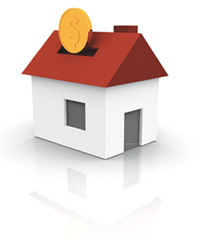
How Your New Home Got So Expensive
By on Aug 29, 2007

If you were to receive an itemized bill for the
purchase of your new home, you may be
surprised to see where the majority of the costsare attributed. The most expensive component is,
predictably, the land at approximately half of thetotal price tag, depending on where you are buying.
Mississauga is one of the more expensive places todevelop in the GTA, with land costs as high as
$6,000 per front foot (totalling approximately 60 percent of the cost of the home). Durham Region offers
a more affordable rate of around $3,500 per frontfoot, usually 40 per cent of the final price. The
second item on the list is the hard construction(materials, equipment, etc.). The third, and most
aggravating, component of fees is the taxes to thethree levels of government.
"A striking part of the cost of any new home,
included in the land cost, is around $25,000 to
$30,000 in development levies paid to the region andthe town. On top of that are the building permit fees
and GST on top of that again. This is an issuebuilders like consumers to know because it is such a large amount of money," says Bob Finnigan, senior
vice-president of operations for The Heron Group.
Indeed these figures are staggering. According to a
1996 study conducted by the Canada Mortgage and
Housing Corporation (CMHC), as much as 21 percent of the price of a new home in southern Ontario
is ancillary costs: levies, fees, land transfer and transactioncosts, and taxes.
To put these figures into dollars, consider the
development of a subdivision consisting of 500 newdetached homes in Vaughan, one of the highest taxed
regions in the country. The average price of eachhome is, for example, $400,000. At 6 per cent that's
$24,000 in GST, plus approximately another$60,000 in municipal charges, land development
fees, building permits, plumbing fees, and fees for"soft" services such as education and recreational
facilities. In total the three levels of government willcollect $42 million from the development and sale of
these homes and will continue to collect indefinitelyfrom property taxes.
"New homebuyers annually represent 2 per cent of
the population, but a disproportionate amount of
money comes out of that 2 per cent," says Finnigan,who along with the Greater Toronto Home Builders-
Association/Urban Development Institute(GTHBA/UDI), is in constant negotiation with
municipalities to try and halt the increase of thesefees. "It's certainly not going to go backwards,
but every year there are additional charges that[municipalities] would like to foist onto the builder.
Governments are limited in their funds and theyhave always looked to the building industry as one
that is able to absorb their needs."
Rebates and incentives have been instituted to
lower some of these costs for first-time buyers, such
as the Refund for First Time Purchasers of NewlyConstructed Homes Program and the Ontario
Home Ownership Savings Plan Land Transfer TaxRefund. However, with rising costs of commodities
such as lumber and oil (necessary to produce asphalt)and inflated land values, increased levies and charges
will continue to make the purchase of a new home anoption available to fewer people every year.
The GTHBA/UDI continues to monitor,
negotiate, and report on development chargeincreases, but as Finnigan cautions, "you just can't
squeeze too much."

